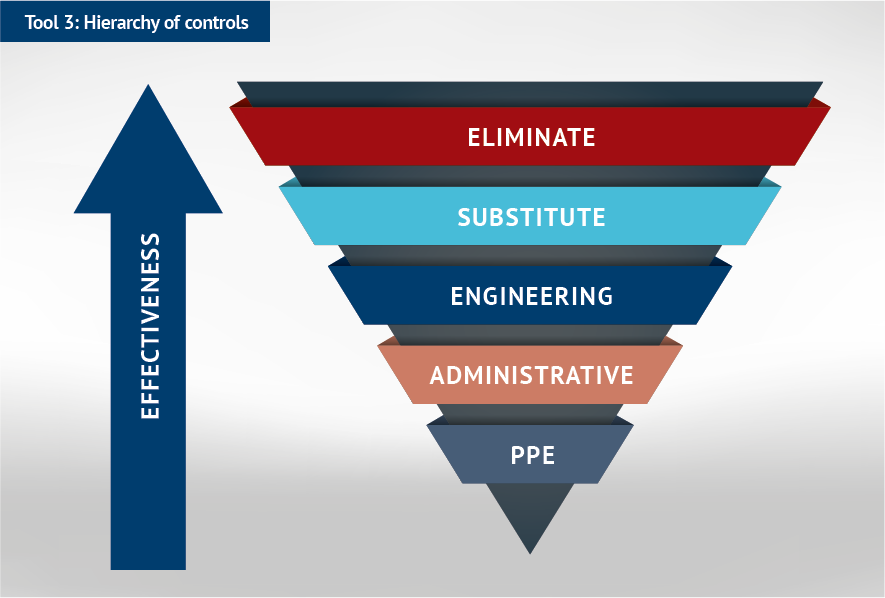
When a risk has been identified, actions can be determined, assessed further up the chain and actioned. The aim of the hierarchy of controls is to eliminate risk. If this is not possible then risk should be minimised.
The hierarchy of controls has traditionally been used to address health and safety issues in the workplace, but the underlying principles can be used to address patient safety risks that have been identified, potentially through using one of the other tools in the CPPE Patient Safety Toolkit e-learning.
The hierarchy of controls can be used for minimising risk within our sphere of influence. The least effective measure is the use of personal protective equipment (PPE) and the most effective measure is to eliminate the hazard.
It can be used to help take practical steps that can be actioned at a local level. It is then possible that successful actions can be communicated throughout the organisation and potentially even implemented on a national scale, where appropriate.
It should be noted that the hierarchy is useful, but controls at each level may not always be feasible to action. For example, suitable PPE may be the only available control measure, and in situations such as the Covid-19 pandemic, PPE is a fundamental part of managing risk to healthcare professionals. There are also extra considerations around the use of PPE such as the availability of supply. It is important to recognise which control measures are able to be implemented.
